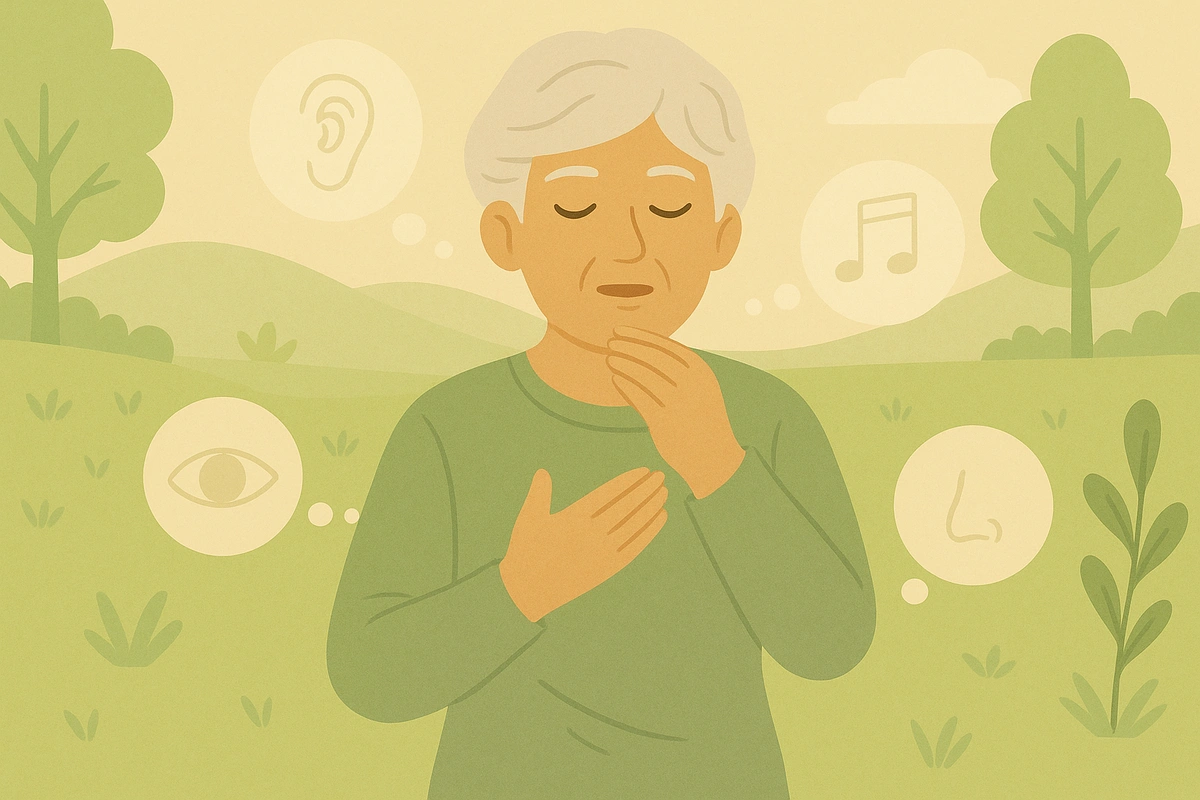Anchoring to your senses involves quickly grounding yourself in the present moment by intentionally focusing on sensory experiences to interrupt anxious thoughts and rapidly stabilize your emotional state.

Anchoring to your senses, commonly known as the 5-4-3-2-1 grounding technique, involves quickly grounding yourself in the present moment by intentionally focusing on sensory experiences. This powerful practice engages your sight, hearing, touch, smell, and taste to interrupt anxious or distressing thoughts, rapidly stabilizing your emotional state and reducing immediate overwhelm.
The technique works by shifting your attention from internal distress toward neutral, external sensory experiences in your immediate environment. Research shows that this sensory anchoring activates the parasympathetic nervous system - your body's "rest and digest" response - while reducing activation in the amygdala, the brain's fear center. This neurological shift interrupts stress responses and facilitates emotional regulation, making it particularly effective for managing anxiety, trauma responses, and dissociative episodes.
Anchoring to your senses works by engaging multiple neurological mechanisms that promote emotional regulation and stress reduction. When you focus on sensory input, you activate the parasympathetic nervous system, which counters the fight-or-flight response triggered by anxiety and trauma.
The technique leverages your brain's limited attention capacity - when you deliberately focus on sensory experiences, fewer cognitive resources are available for anxious or distressing thoughts. Studies indicate that grounding techniques help deactivate the stress response by engaging the prefrontal cortex while reducing amygdala activation.
Sensory grounding works through what researchers call "bottom-up" processing, where physical sensations influence emotional and cognitive states. By consciously directing attention to immediate sensory input, you interrupt dissociative episodes and traumatic flashbacks that pull awareness away from present reality.
The technique also promotes mindfulness by anchoring attention in the current moment rather than allowing the mind to become overwhelmed by past memories or future worries. This present-moment focus helps regulate emotions and provides immediate access to feelings of safety and control.
Additionally, the structured nature of the 5-4-3-2-1 countdown provides cognitive organization during emotional chaos, giving your mind a specific task to complete that requires concentration and redirects attention away from distressing internal experiences.
"I can't focus during panic attacks" - Start with just one sense at a time, particularly touch or sight, which often remain accessible even during intense anxiety. Practice during calmer moments builds accessibility.
"My environment doesn't have enough sensory input" - Focus on subtle details you normally ignore, like the texture of your clothes, distant sounds, or the taste in your mouth. Every environment offers sensory information.
"I feel disconnected from my senses" - This is common during dissociation. Start with gentle touch sensations like pressing your feet into the ground or holding a textured object firmly.
"The technique makes me more anxious" - Slow down the process and focus on just 2-3 senses initially. If anxiety persists, consider working with a mental health professional familiar with trauma responses.
"I forget the sequence when stressed" - Write the 5-4-3-2-1 sequence on a card or phone note for reference. With practice, the structure becomes automatic.
"Nothing seems to work during flashbacks" - Trauma responses may require additional support. Consider professional guidance and remember that grounding is often most effective when combined with other trauma treatments.